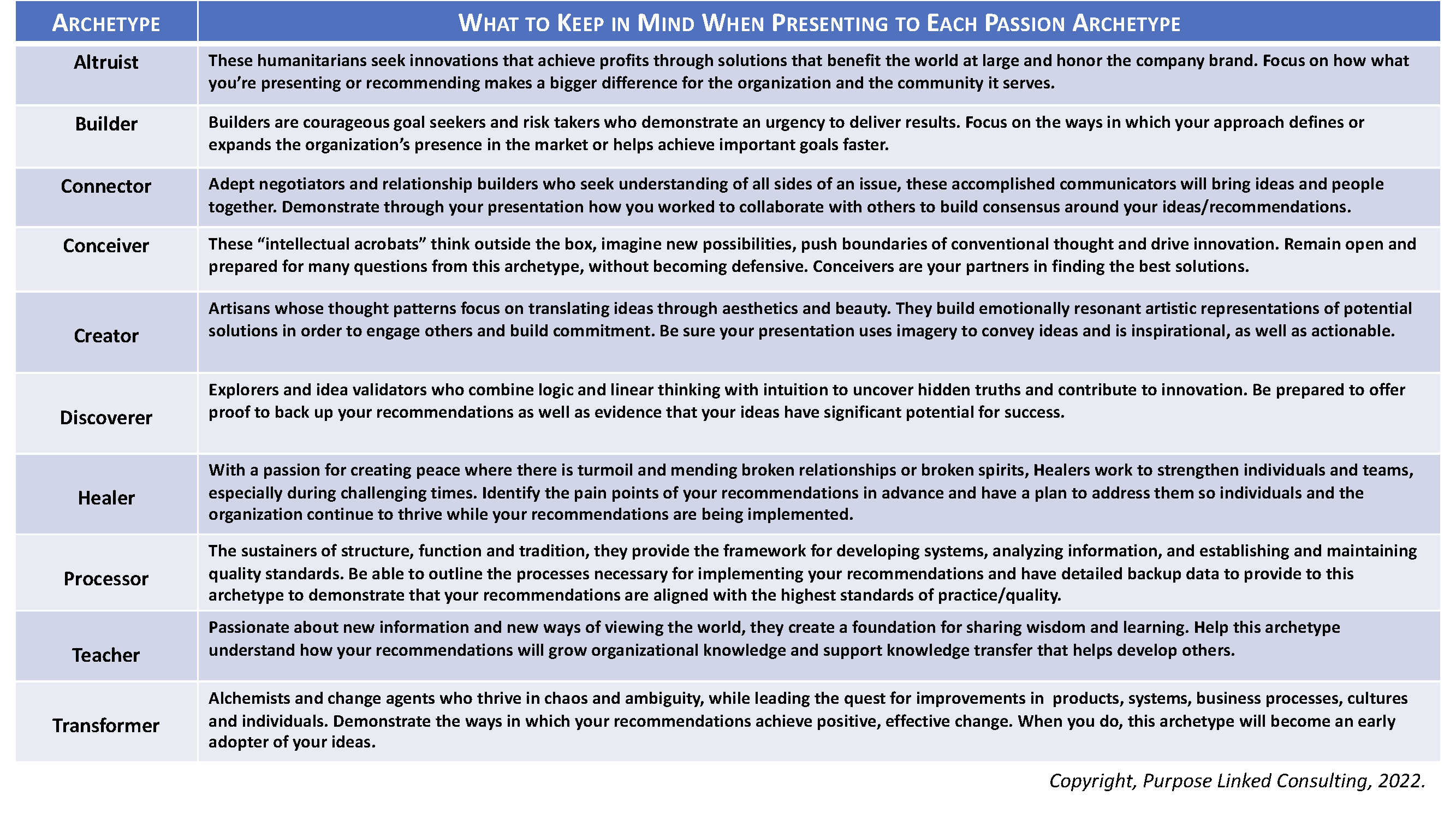“I feel like there is a lot riding on this presentation and we’re just not ready.”

Anna, the leader of a strategy team, voiced concern about her team’s ability to deliver a compelling presentation to the CEO and his direct reports about a project they’d been working on for nearly a year. At some level, I shared her angst having just watched them rehearse the presentation. It was death-by-PowerPoint, a soulless representation of months of research and insight gathering on a topic critical to the company’s long-term success. But it wasn’t that the team didn’t know their subject or had done a shoddy analysis of the business challenge they were charged with solving. Instead, they had failed to appreciate two important factors necessary for persuading the top decision makers to adopt their recommendations:
1. Their confidence in their own work is critical to a successful presentation
The team was composed of entry level managers who were working on the strategic project as part of a year-long development program. The projects were chosen by leadership and assigned to a team of high potential employees in the hope of gaining a fresh perspective on some recalcitrant issues that had long been plaguing the company’s culture. Every member of the team embraced the opportunity and dug into the issues. After researching culture building programs both externally and internally, they developed some innovative solutions that if implemented, would both improve company culture and employee engagement.
The team’s fear in sharing what they discovered was in stepping outside of the box, and perhaps recommending approaches that would challenge conventional thinking. The first version of their presentation mirrored their hesitance. It was so full of platitudes and over-acknowledgement of other people’s work that the team failed to fully present and own their own ideas. More than half of their slide deck focused on what had already been done in the company and by whom, rather than what needed to be accomplished and how that might be achieved to take the organization to the next level. The CEO didn’t want a history lesson. He wanted solutions that work.
“They’ve asked us to think beyond the ordinary,” said Anna. “I think it’s high time that we stop walking on eggshells and embrace our findings.”
She was right. If you’re going to convince senior executives that your ideas are worth considering, you must believe in them yourself and acknowledge the work you’ve put in to researching those ideas. With enough effort, you become a knowledge expert that knows more than your audience about the topic. Recognizing that allows you to present with confidence in your work product, while still being humble enough to acknowledge others who traversed the path before you did.
2. Presenting to the C-suite requires understanding the audience at the level of their passions
While “know your audience” is a mantra for presentation success, communicating ideas in a way that prompts others to embrace them requires more than a cursory analysis of the listener. When I asked the team to whom they’d be presenting, they were able to share the basic pedigree of each member of the executive team. They focused on what positions each person held and their tenure with the company. A few team members knew something about the various schools executives had attended, and if they were rumored to be big fans of particular sports leagues. Yet, none of the knowledge they shared at that point provided deeper insight into the drivers of each executive, which would have offered more guidance on how to deliver a message in a way that would foster commitment.
Then Anna asked one important question that changed everything. “What do we think the main passion archetypes are of the executives we’re presenting to?”
The team pondered the question briefly and realized that Anna was on to something. They had learned earlier in the development program about passion archetypes, the deeper aspects of personality that are tied to an individual’s sense of purpose. Anna suggested that they structure their presentation to be able to “speak the language” of the executive’s passions to build support for their recommendations. The team settled on four main passion archetypes they were likely to encounter among the executives. They were Builder, Transformer, Conceiver and Connector.
Here is how to approach each passion archetype (PDF) when preparing for your next presentation, or during any important interaction where you need to influence another individual:

Anna’s instinct was spot on. The team reviewed their recommendations and aligned them with the primary archetypes on the executive team. The senior leaders were engaged and attentive during their presentation, and the team’s recommendations were approved for implementation. Their experience is proof that demonstrating confidence in your subject matter expertise and understanding deeper aspects of audience personality support your success in influencing at the highest levels.
Alaina Love is CEO of Purpose Linked Consulting and co-author of The Purpose Linked Organization: How Passionate Leaders Inspire Winning Teams and Great Results. She is a recovering HR executive, a global speaker and leadership expert with Fortune 500 clients. Follow Love on Twitter, Facebook, YouTube, or read her blog.
Opinions expressed by SmartBrief contributors are their own.
_______________________________
Subscribe to SmartBrief’s FREE email newsletter on leadership. It’s among SmartBrief’s more than 250 industry-focused newsletters.
